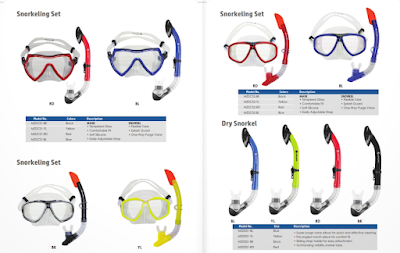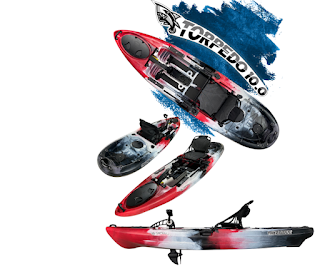SAFE DIVING
Truth be told, jumping is viewed as more secure than numerous other more customary games. Regardless of what dramatist news features recommend, the occurrence of plunging mishaps is definitely less regular than you may envision. To qualify as a scuba jumper, you need to pass clinical freedom and complete both hypothetical and down-to-earth tests before diving you should know about fishing equipment. Add to this the way that cutting-edge gear is both solid and innovative, and you have every one of the elements for a protected game. Our entrance-level jump courses show us the causes and results of plunging mishaps. Each great plunge instruction ought to incorporate data regarding how to stay away from risky circumstances, and crisis techniques for adapting to them would it be advisable for them they emerge. With adequate preparation and arrangement, we can undoubtedly try not to most jump mishaps. In any case, each jumper ought to have somewhere around a fundamental comprehension of how to treat things turn out badly. Albeit the risk potential might appear to be high, jumping is really a moderately protected game when led reasonably. The accompanying rundown of rules is in no way, shape or form thorough however offers fundamental standards to limit the probability of a jumping mishap.
Really look at security gear:
Check your hardware seven days before you intend to plunge. Ensure all that has been adjusted and kept up with appropriately. Make sure to actually look at the batteries for your plunging and submerged light. At the point when you show up at your objective and are prepared to unit up, you want to make sure that your hardware is working appropriately.
Focus on jumping:
Notwithstanding your gear, your body should be prepared to jump. Assuming you are feeling sick or in any case ill-equipped to jump: pay attention to the messages that your body is sending you. It's more vital to miss a jump since you're not feeling like it, than it is to face challenges.
Never pause your breathing:
As each great section level plunge understudy knows, this is the main rule of scuba. Furthermore justifiably - breath-holding submerged can bring about genuine injury and even passing. As per Boyle's law, the air in a jumper's lungs extends during rising and agreements during plummet. However long the jumper inhales consistently, this isn't an issue since overabundance air can get away. In any case, when a jumper pauses his breathing, the air can never again escape as it grows, and in the end, the alveoli that make up the lung dividers will burst, making genuine harm the organ.
Injury to the lungs due to over-compression is known as pneumonic barotrauma. In the most outrageous cases, it can cause air pockets to escape into the chest cavity and circulatory system. Once in the circulation system, these air pockets can prompt a blood vessel gas embolism, which is regularly lethal. Profundity changes of only a couple of feet are to the point of causing lung-over development wounds. This makes pausing one's breathing risky consistently while driving, not just when climbing. Keeping away from aspiratory barotrauma is simple; just keep on breathing consistently.
Utilize the mate framework:
Albeit a few preparing associations currently offer performance plunging certificates, jumping alone remaining parts an outright no-no except if appropriately prepared. The familiar aphorism "when you plunge alone, you pass on alone" exists which is as it should be. Most of the crisis abilities depend on the presence of an amigo. For instance, without the chance of another air source in an out-of-air circumstance, you do have not very many choices. You can play out a CESA assuming you are sufficiently shallow. Be that as it may, much of the time, you would need to turn to an uncontrolled light rising, which would almost certainly have serious actual repercussions.
Measurements from DAN, BSAC, and DAN Australia showed that in 86% of lethal cases, the jumper was separated from everyone else when they passed on. Wandering excessively far from your pal or losing them totally can be a deadly misstep. Your mate is your help and emotionally supportive network submerged, and you should regard them in that capacity. In the event that the jump guide sets you with an outsider before a plunge, invest in some opportunity to get to know them. Get some information about their preparation and experience, and any extraordinary worries they may have. For instance, on the off chance that your mate wears contacts they can not open their eyes submerged. You'll have to help them on the off chance that they lose their veil. Continuously decide in favor of alert when contrasting measures or PCs and your mate. Maintain the principles of the safest instrument.
Set up certain lightness at the surface:
We as a rule consider risky driving circumstances happening submerged. In any case, as a general rule, 25% of jumper fatalities come from issues that emerge on a superficial level. Weakness is a component in 28% of jumper passings. This is most ordinarily because of a jumper endeavoring to stay on a superficial level while over-weighted. Setting up sure lightness at the surface saves energy, forestalling weariness and suffocating. You ought to set up sure lightness toward the finish of each plunge. Doing as such is the initial phase in giving help to a drained, frozen, or oblivious jumper at the surface. Expand your BCD completely, and if essential, drop your loads.
Remaining protected while driving is basic. With cautious readiness, presence of mind, and ability certainty, the potential dangers are adequately limited. Adhering to these guidelines and different rules of your preparation guards you as well as permits you to unwind and have a good time. Also that, all things considered, is the reason you go making a plunge the primary spot.



Comments
Post a Comment